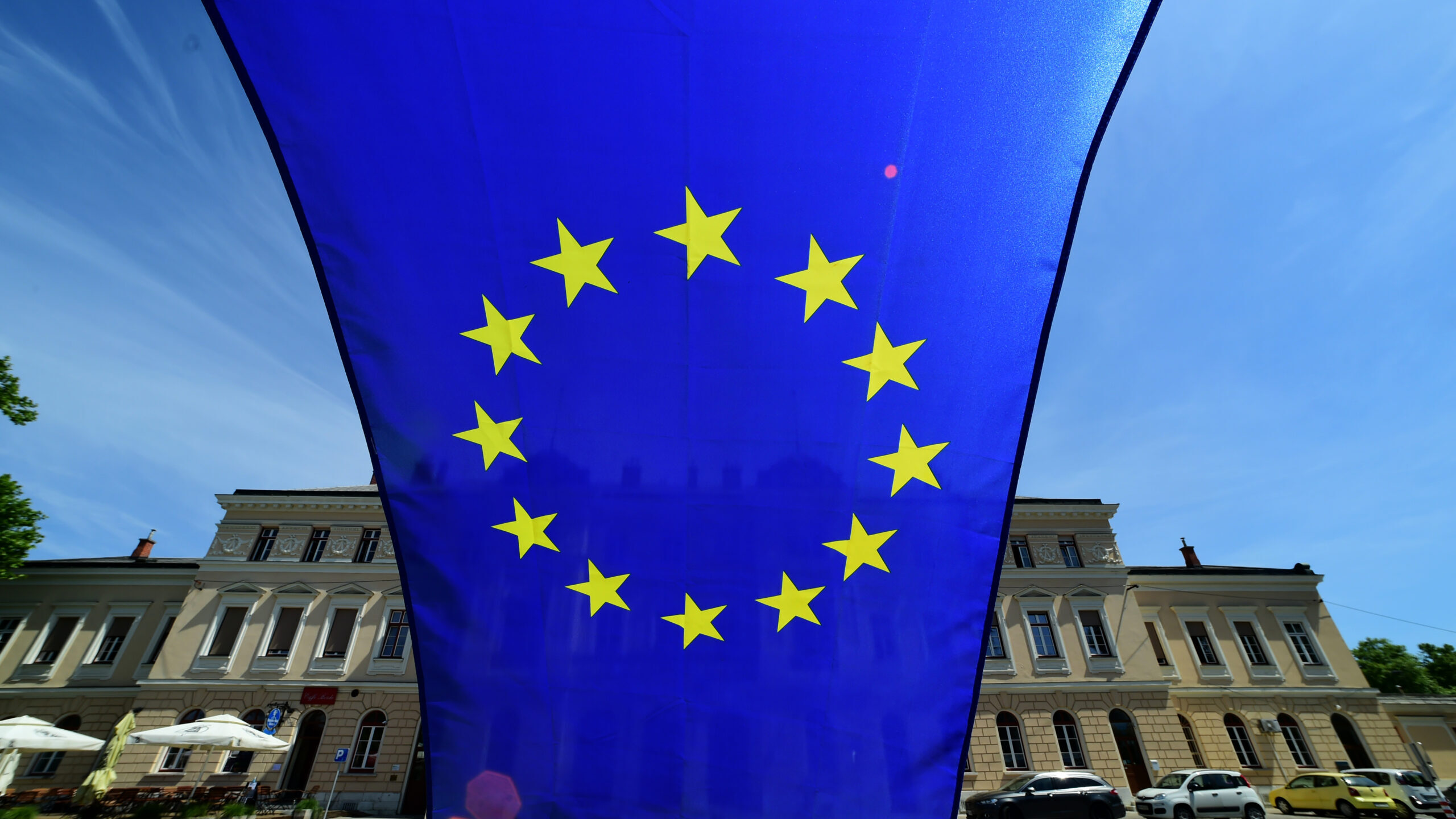
The European Defense Fund is part of a broader system of small pots of money for EU nations. (Photo by Pier Marco Tacca/Getty Images)
The European Union’s European Defense Fund (EDF) is one of the many pots of money floating around Europe right now to help encourage domestic defense technology development, one viewed by smaller nations as a game-changing tool. But like anything related to the EU, it has more than its share of bureaucratic hurdles to overcome. In this analysis piece, Donatas Palavenis of the Baltic Institute of Advanced Technology gives a cheat-sheet of sorts for countries interested in landing EDF backing.
On April 29, 2021, the European Parliament approved €7.9 billion for funding the European Defense Fund (EDF) from 2021 to 2027. While small money by American standards, the funding for EDF is hugely consequential for smaller European nations, who hope to use it to jumpstart local defense projects and support local industry.
But how to break through the bureaucracy and make sure your program gets funded? It’s a fair question. Luckily, recent history provides something of a roadmap.
First, some background on the program. The EDF seeks to consolidate European strategic autonomy and enhance national defense. The fund promotes cooperation between the industries of European nations, promotes innovation, and contributes towards the development of advanced defense technologies and products. At the same time, the EDF is designed to allow EU countries to save large amounts of money by providing other means of funding that could be used towards covering some of the national defense expenditure requirements. The EDF will co-finance up to 20% prototyping costs and up to 80% of additional certification and testing activities.
RELATED: Turkey’s Fighter Flirtation With Russia: Is It Serious?
EDF is expected to have two funding lines: one funds collaborative defense research (up to €2.6 billion), and the other funds collaborative capability development projects complementing national contributions (up to €5.3 billion). The fund will subsidize projects carried out by at least three operators from three different Member States.
Funding for projects will be decided in accordance with their compliance with the EU Security and Defense Policy, prioritization tools established by the European Defense Agency. It is estimated that 4–8% of EDF support will be implemented towards emerging disruptive technologies in the field of defense. The programs developed within the framework of the EU’s Permanent Structured Cooperation (PESCO) will be able to receive up to 10% greater financing.
There are two other preparatory programs that need to be touched on. The Preparatory Action on Defense Research (PADR) and the European Defense Industrial Development Program (EDIDP) were two pilot programs launched between 2014–2020. The PADR program provided €90 million in grants for 18 projects in defense research cooperation. More than 200 entities from 22 EU Member States and Norway have participated in the PADR, where small and medium-sized enterprises (SMEs) attracted 22% of grants. Meanwhile, the EDIDP provided €500 million in funding for 21 joint defense development projects. The EDIDP involved 166 companies from 24 EU countries, where SMEs attracted 37% of all financial support. Additionally, €160 million was provided directly for two projects in the framework of EDIDP.
RELATED: Navy’s Unmanned Ships Sail With Allies In The Middle East
So, what could be the winning strategy for nations interested in taking part in EDF? An analysis of the winning bidders show four key factors: the amount of previously awarded EDIDP and PADR grants, a tie-in with PESCO effort, teaming with companies from a major European nation, and a need for SME companies in the consortium.
Fifteen of the 26 winning EDIDP projects were identified as participating in the PESCO programs. Ten out of 15 EDIDP programs were coordinated by entities from the same nation which are responsible for coordinating specific PESCO projects.
There is a strong relationship for successful EDIDP projects in terms of companies involved from large EU countries. There were 20 entities participating from France, 19 from Spain, and 14 from Italy. So there is no surprise that only three winning projects had no companies from France, Spain or Italy involved.
It should not be disregarded that larger companies actively include participants from small nations, especially SMEs, in order to increase their ability to boost overall project funding up to 25%.
So what could be the winning strategy? Firstly, to identify which partners to ally with and in which specific programs it is most worthwhile to participate in. Secondly, the proposed project should be linked to a PESCO effort; in this case, it is necessary to coordinate closely among the PESCO partner nations to ensure that there are no plans to promote national entities. Thirdly, look to involve companies from France, Spain, and Italy, as that would increase chances for a positive decision in Brussels; participants have to consider priorities highlighted in various prioritization tools developed by the European Defense Agency. And lastly, SMEs from small EU countries should understand that they are valuable assets for bigger entities from large EU countries as SME participation ensures a higher enticement for overall project financing.
It’s not perfect, and it’s not easy. But for nations looking to tap into EDF funds, the above provides at least a basic roadmap to move forward.
Maj. Donatas Palavenis of Lithuania is a junior researcher in the Baltic Institute of Advanced Technology (BPTI). The views of this piece do not reflect the views of the Lithuanian Armed Forces.
Northrop sees F-16 IVEWS, IBCS as ‘multibillion dollar’ international sales drivers
In addition, CEO Kathy Warden says the company sees a chance to sell up to five Triton UAVs to the NATO alliance.


























